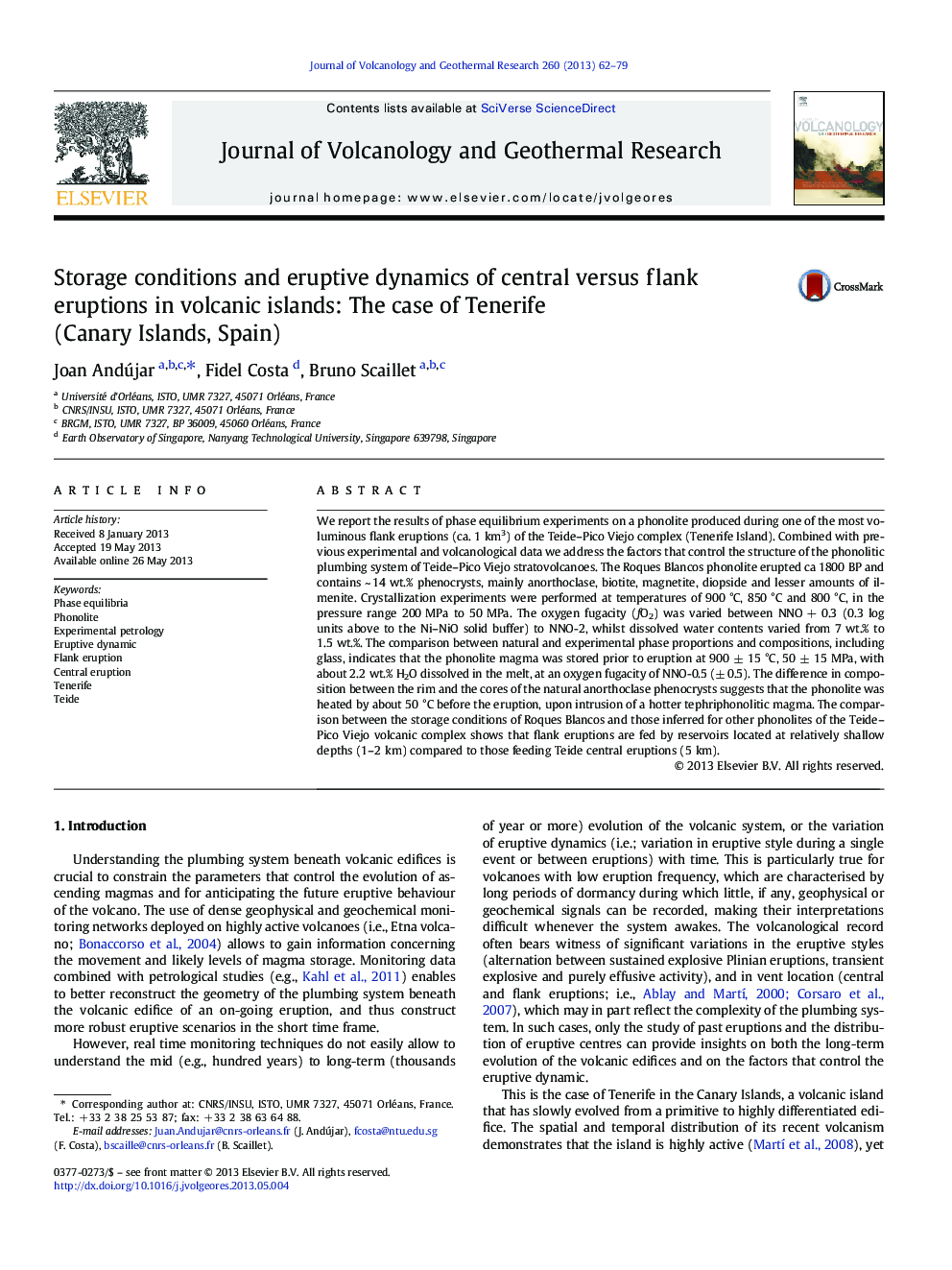| Article ID | Journal | Published Year | Pages | File Type |
|---|---|---|---|---|
| 6440134 | Journal of Volcanology and Geothermal Research | 2013 | 18 Pages |
Abstract
We report the results of phase equilibrium experiments on a phonolite produced during one of the most voluminous flank eruptions (ca. 1 km3) of the Teide-Pico Viejo complex (Tenerife Island). Combined with previous experimental and volcanological data we address the factors that control the structure of the phonolitic plumbing system of Teide-Pico Viejo stratovolcanoes. The Roques Blancos phonolite erupted ca 1800 BP and contains ~ 14 wt.% phenocrysts, mainly anorthoclase, biotite, magnetite, diopside and lesser amounts of ilmenite. Crystallization experiments were performed at temperatures of 900 °C, 850 °C and 800 °C, in the pressure range 200 MPa to 50 MPa. The oxygen fugacity (fO2) was varied between NNO + 0.3 (0.3 log units above to the Ni-NiO solid buffer) to NNO-2, whilst dissolved water contents varied from 7 wt.% to 1.5 wt.%. The comparison between natural and experimental phase proportions and compositions, including glass, indicates that the phonolite magma was stored prior to eruption at 900 ± 15 °C, 50 ± 15 MPa, with about 2.2 wt.% H2O dissolved in the melt, at an oxygen fugacity of NNO-0.5 (± 0.5). The difference in composition between the rim and the cores of the natural anorthoclase phenocrysts suggests that the phonolite was heated by about 50 °C before the eruption, upon intrusion of a hotter tephriphonolitic magma. The comparison between the storage conditions of Roques Blancos and those inferred for other phonolites of the Teide-Pico Viejo volcanic complex shows that flank eruptions are fed by reservoirs located at relatively shallow depths (1-2 km) compared to those feeding Teide central eruptions (5 km).
Related Topics
Physical Sciences and Engineering
Earth and Planetary Sciences
Geochemistry and Petrology
Authors
Joan Andújar, Fidel Costa, Bruno Scaillet,
